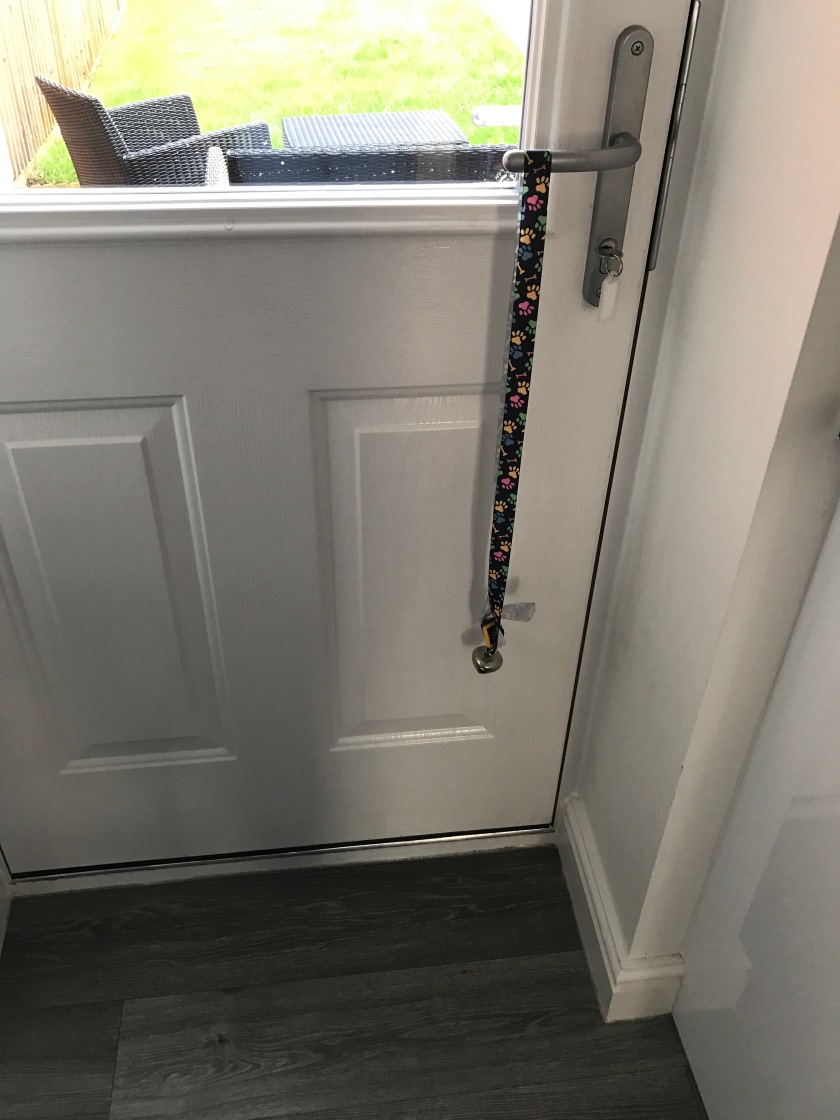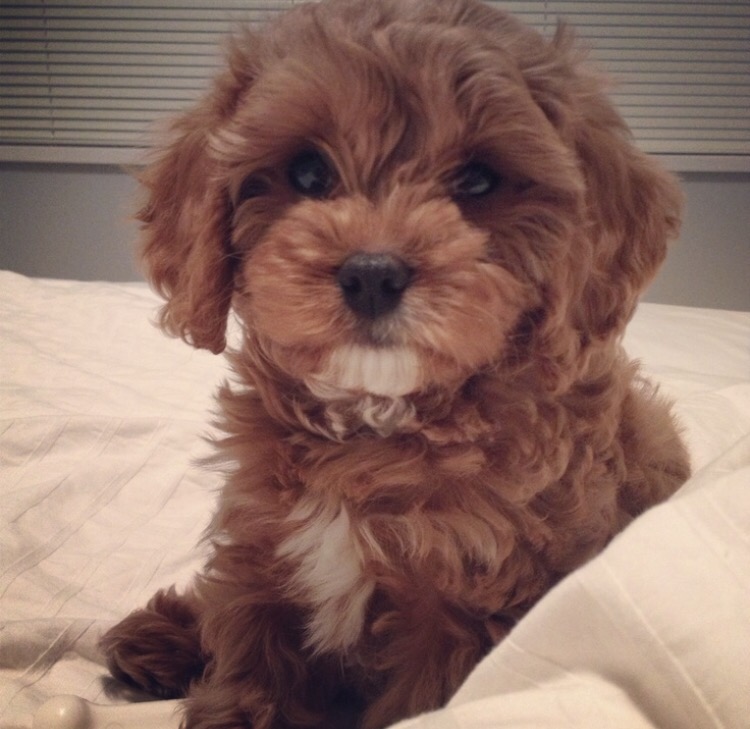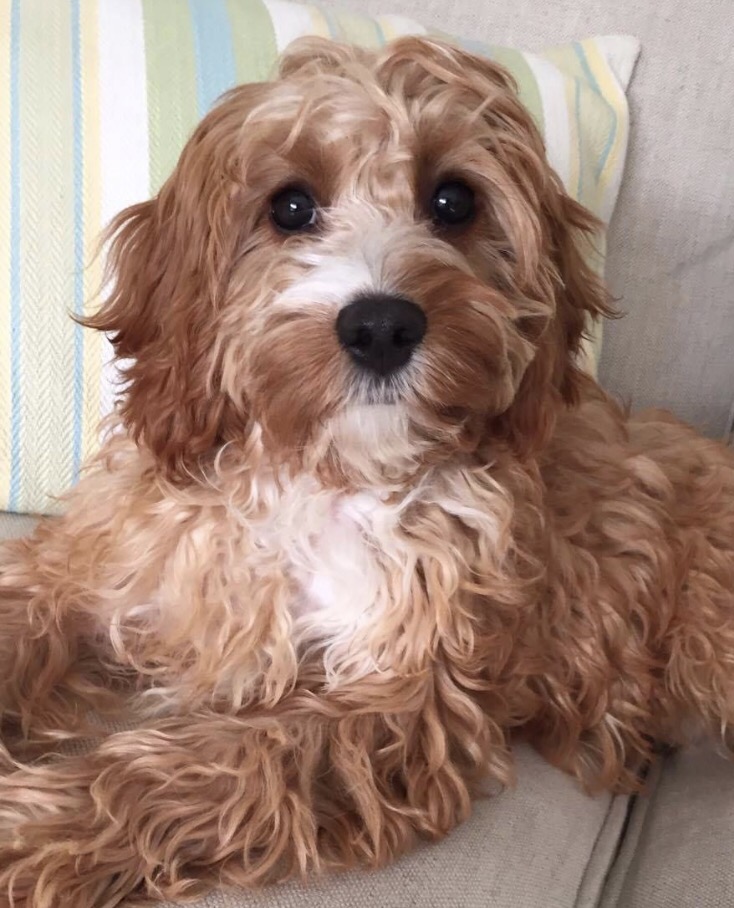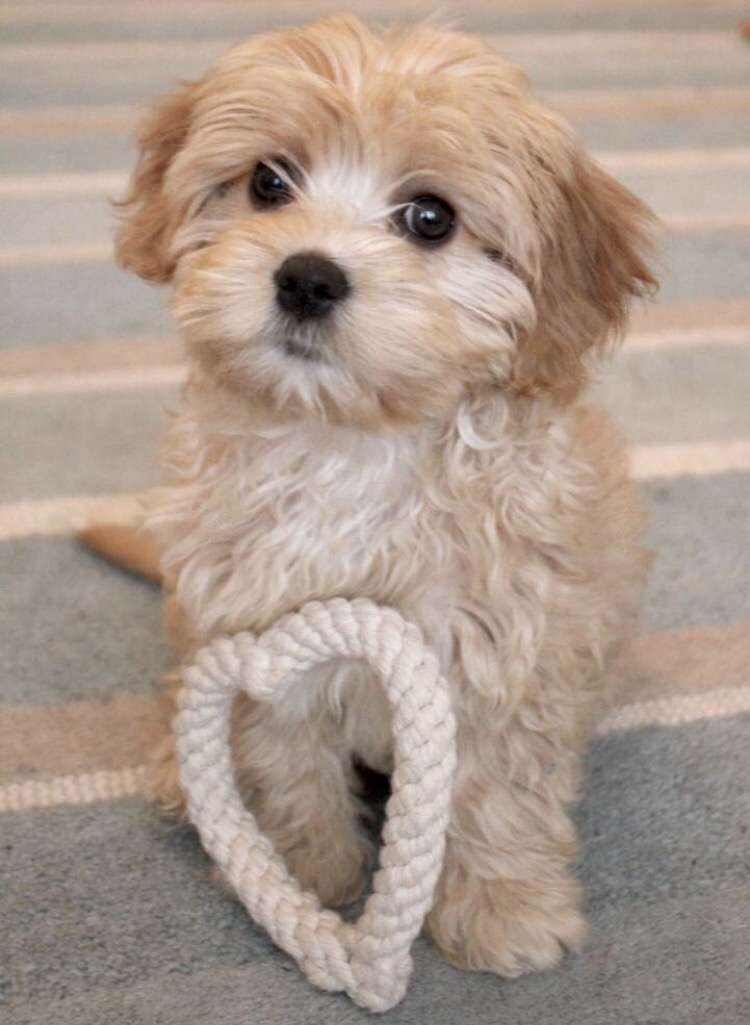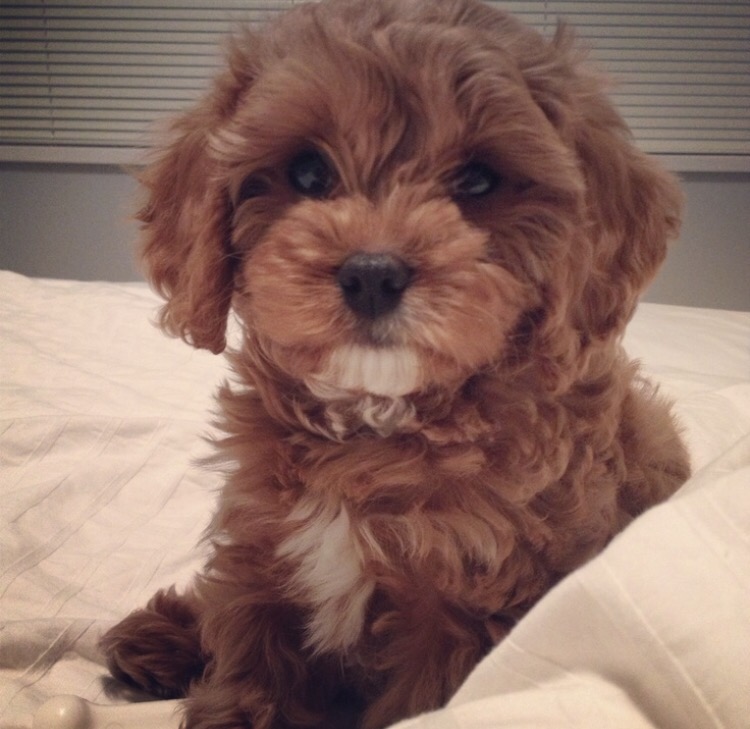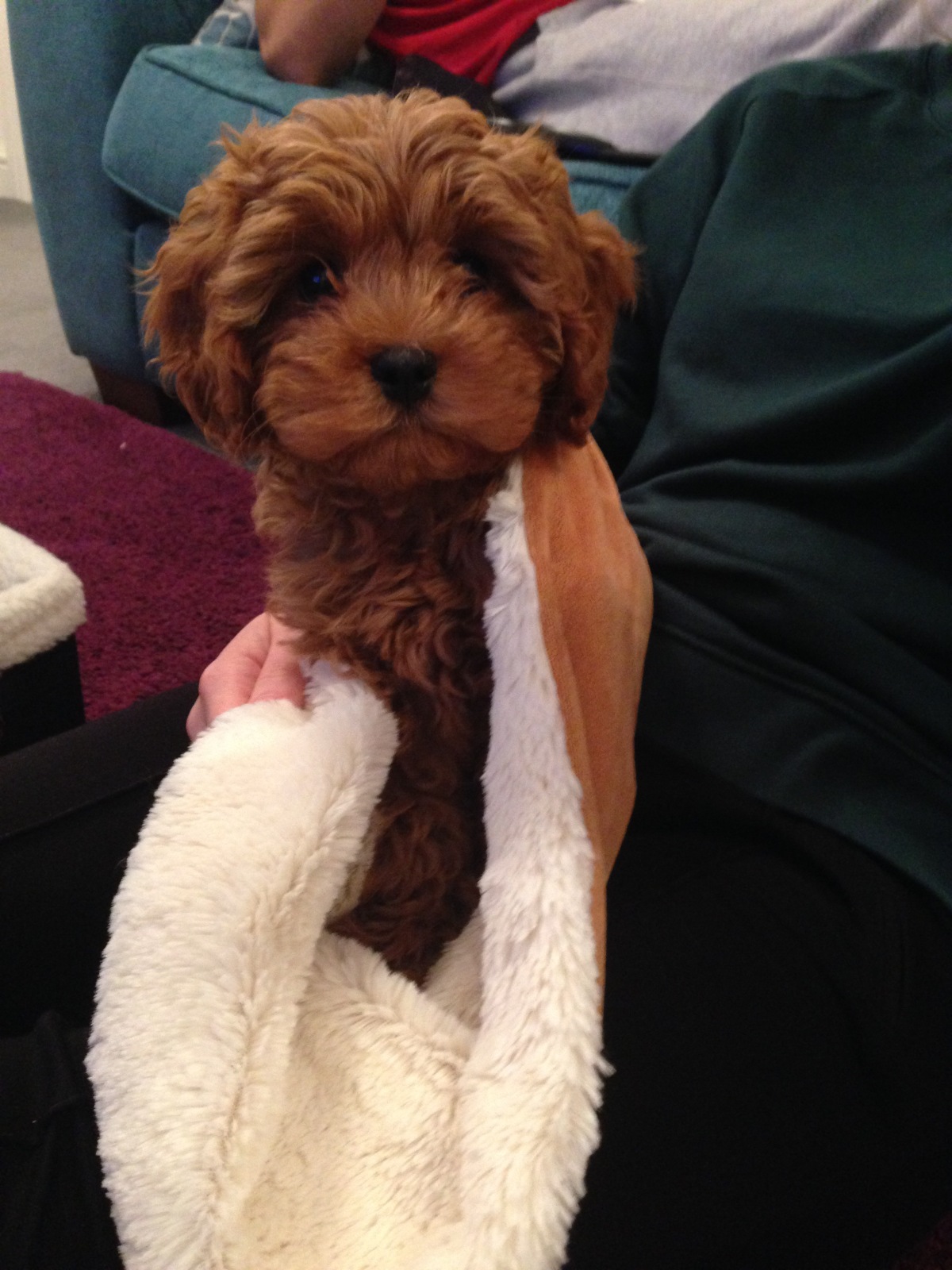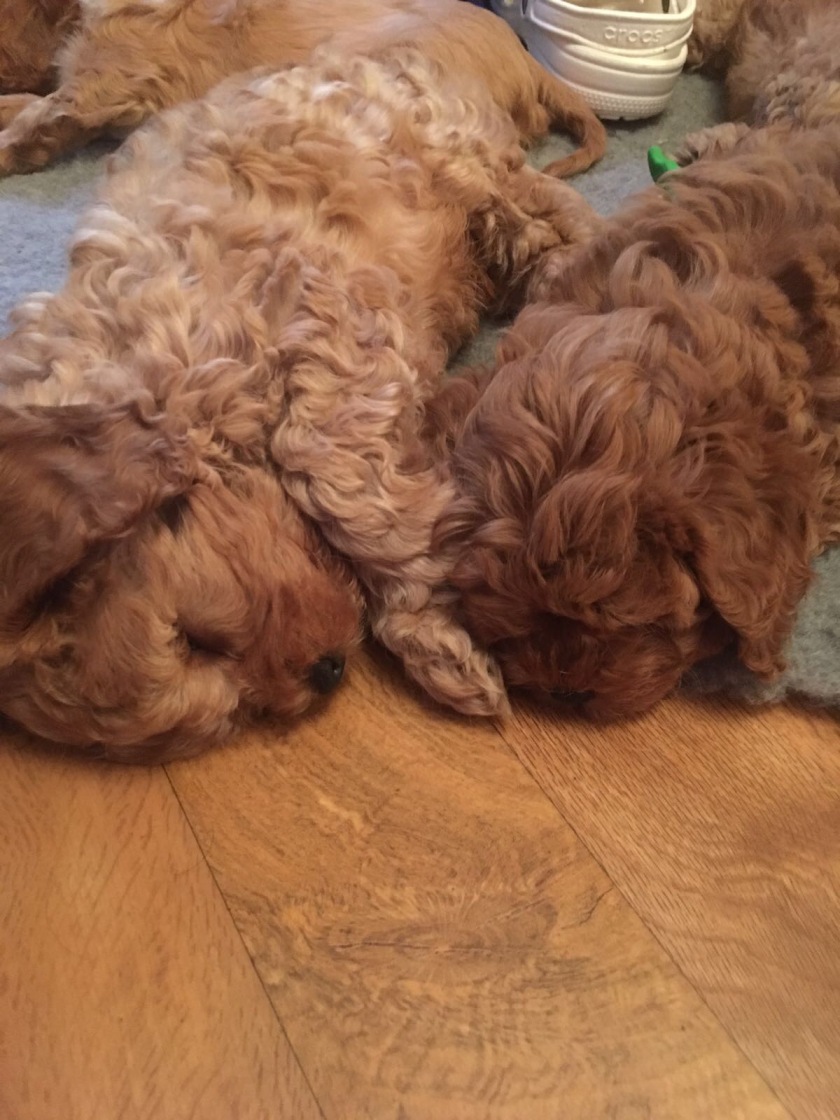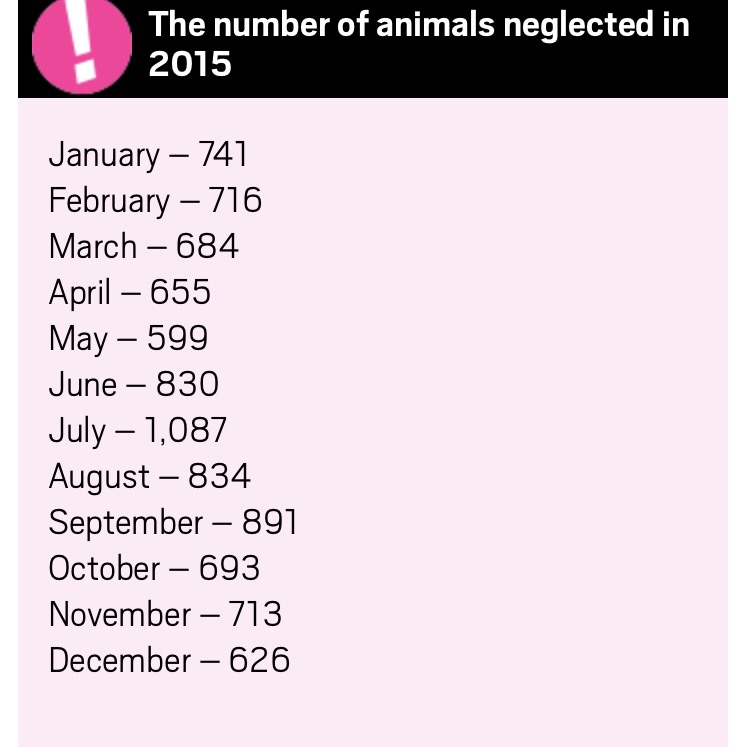Toilet training. The biggy for any new puppy joining your household! There are many ways to toilet train and this is just what I did with Baxter which was successful.
I didn’t use indoor puppy pads! I bought them originally but Baxter just tore them up rather than used them for toileting!
What you will need:
- A crate
- A training bell
- Baby monitor (I live two floors above my kitchen where Baxter slept!)
- Cleaning solutions for accidents
- Treats
- Patience!
- A regular feeding schedule
Crate set up
If you read my Crate Training post you will see how I initially set up Baxter’s crate. The key things are:
– using a divider to make it small enough to be just a bed not a bed and toilet area
– using the crate when you are out of the house/ sight and can’t monitor
– using it all night
I’d recommend placing it in your kitchen as accidents on a non carpeted floor are easier to manage and my kitchen is where my back door is! We kept Baxter in the kitchen until he was successfully toilet trained in this room. I think this was extremely important in his training but it’s your choice of course. We then adding room by room as his training improved.
Training bell
Bell training involves teaching your dog to ring the bell when he goes out to toilet. A training bell is easy to find and should be placed on your back door (or whichever door you’ll be using). Simple and easy!
Okay so this might sound daft but how else was I going to hear Baxter’s whining for his night time toileting? I live two floors above my kitchen so used this at night times.
Cleaning solution
Just necessary! Get yourself one. I will be doing a puppy essential items list soon which will show everything I purchased. The important thing is it’s for doggy accidents.
Treats
Make sure you buy treats and keep them at the back door ready to reward your puppy when he toilets! If on a kibble diet, you could use a different kibble to your usual food. If raw fed, I love beautiful joes liver treats and also treats2sit4.
Patience
Toilet training won’t be 100% accident free but you will get there!
A regular feeding schedule
Rules of thumb. Take up water an hour before it’s puppy’s bed time. Last feed should be around two hours before (this worked for us).
Feed at regular, set intervals during the day. This helps to regulate your puppy and helps you to figure out when he needs to go more routinely!
Step 1: When you bring puppy home
When you first bring your puppy home, he has no clue where his toilet is and you need to teach him. So the first thing we did with Baxter was take him to where we wanted him to toilet (our garden) and waited treat at the ready for him to go. Waited and waited…40 minutes of walking around…I told you patience is key…when finally he pooped! (It was cheers all around!).
Whilst he was doing his business I said “toilet”, he was praised immediately afterwards and given a treat. This is important. You want to begin building the association between: “toilet” > puppy going toilet > rewards and treats. Initially saying “toilet” and expecting pup to know what you mean doesn’t work so just say it as they begin initially.
All I can say is he associated from right there that the garden was his “toilet” for poop! I cannot stress enough how little he pooed inside after this! See common mistakes at the end for reasons he did end up having a few accidents!
I would recommend you also hold out for a wee! We didn’t and it is probably why that took longer to teach!
Step 2: Throughout the day
At 8 weeks old your puppy is likely to hold his bladder only for around 2 hours. The rule is age in months + 1. However, initially your puppy won’t have a clue that he needs to hold his bladder at all so leaving him for 3 hours just didn’t make sense to us!
Rules:
Take your puppy to toilet after:
- Play
- Naps
- Meals
- Every two hours
It is intense but it is worth it! Also keep an eye on his “toileting behaviour”. Does your puppy start sniffing at the carpet? Is he circling? If so take him out!
The routine for taking him:
- Touch his nose to the bell on your door
- Open the door and say “toilet”
- Lead puppy outside and wait
- Treat after he goes toilet
Though tempting, do not play with your puppy during his toilet training. You want him to learn that he needs to go toilet and no fun, games or play occur until then! Sometimes you may end up waiting for ages. But be patient.
Some of our biggest mistakes were bringing Baxter in too soon at which point he peed on the kitchen floor! If you do bring them in, crate them to avoid an accident!
Step 3: Dealing with accidents
Occasionally there might be an accident, if you catch it quick enough, say “no” and take your puppy outside following Step 2.
If you don’t see it and come back to a puddle or poo, don’t shout. Well I didn’t with Baxter anyway. Puppy doesn’t know he’s made a mistake so shouting at him might actually make him think that if he toilets in front of you, it’s bad. Consequently he might “hide” when he toilets and you’ll end up with wee and poo behind your sofas!
Instead ignore the behaviour and thoroughly clean it. If you can’t watch your puppy crate him (see step 5) to help with toilet training.
Step 4: night time training
There are lots of ways to teach night time toileting but this is what I did with Baxter with 100% success!
I crated him at 10pm after ensuring he had gone to the toilet. Don’t feed your puppy two hours before bed and withhold water an hour before to help.
His crate was just big enough for him and some toys (see my set up here). Any whining for the next 30-60 minutes I ignored as he had just been to the toilet and I associated this with him wanting to be out of his crate instead!
I set up the baby monitor and any time he whined AFTER he had fallen asleep (after 11.30pm) I came downstairs. Didn’t play with him but took him out (following step 2). Immediately after he was finished, I placed him back in his crate and went back upstairs. Luckily Baxter didn’t whine after he was put back to bed. If your puppy does, once again ignore for an hour or two as you know he can hold his bladder! If you do go down and take him out and he doesn’t go, immediately crate him again to avoid an accident.
Luckily Baxter whined twice a night for three nights and after that, he was able to go through all night. Amazing as we hadn’t expected it at all! He would only then whine from around 5am which moved to 7am as his bladder got better! Understandably he needed to toilet by then.
Step 5: training when you leave puppy at home Or can’t watch him
This point is extremely important. We want puppy to have success and leaving him unattended to have accidents is not going to be helpful. At times you can’t watch your puppy in the house (for example if you are taking a shower or in another room), crate him. This will help him in holding his bladder and give him more success. Take him to toilet before and after you crate him.
Make sure you leave him no longer than his age in months + 1! This is important as he won’t want to go in his “den” but if he has to because he’s been left too long, he’s going to feel pretty awful…
Ths will teach your puppy to hold his bladder effectively and help him have success.
Step 6: Increasing his space in your home
Once toilet training is 100% (or mostly) successful in the kitchen, begin to give your puppy access to the next room perhaps your living room. At some stage, you will find that your puppy will begin to tell you he need to toilet by pressing the bell. This is usually a good sign that he gets it and you’ve done bell training correctly!
Still follow his schedule of course for toileting but widen his space. Always ensure he can get to the back door to ring the bell! Taking puppy upstairs is trickier so stay downstairs initially!
Common toileting mistakes I made and how to avoid them
- Coming in too soon and an accident occurring indoors : the more times this happens, the worse off your training will be! Wait outside for your puppy to go or crate him immediately when he doesn’t go. This will help you avoid the accident and give him more chance of success! Leave him for say 15 minutes then take him outside again. When you first bring your puppy home, wait for him to wee and poop outside in his toileting area. This will strongly build his association with garden = toilet!
- Leaving puppy unattended : crate your puppy if you can’t watch him! We want to build success.
- Not taking him out at regular intervals : the regular toilet breaks are key even if he hasn’t had an accident for awhile
- Ensuring he can get to the bell: if he associates the bell with toileting and begins to ring it, ensure he can access it when in other rooms. This may involve walking the route from each room back to the back door so he learns! This took Baxter awhile and so the training schedule was so important!
- Go slow with new rooms: as you increase each room, ensure your puppy has gone to the toilet BEFORE going in and take him regularly to toilet so 1) he knows the route and 2) he doesn’t learn that he can toilet there! Follow step 2!
- Don’t get too confident : so your puppy has had a good week. Don’t be fooled! When we laxed with Baxter accidents occurred. Stick to routine! Increase intervals between toileting as your puppy ages but don’t stop taking him out! Also don’t stop treating. Treats are great rewards for food behaviour.
Toilet training is hard but within 2-3 months Baxter was fully trained and it was great!
So what do you think? What’s your toilet training method?
